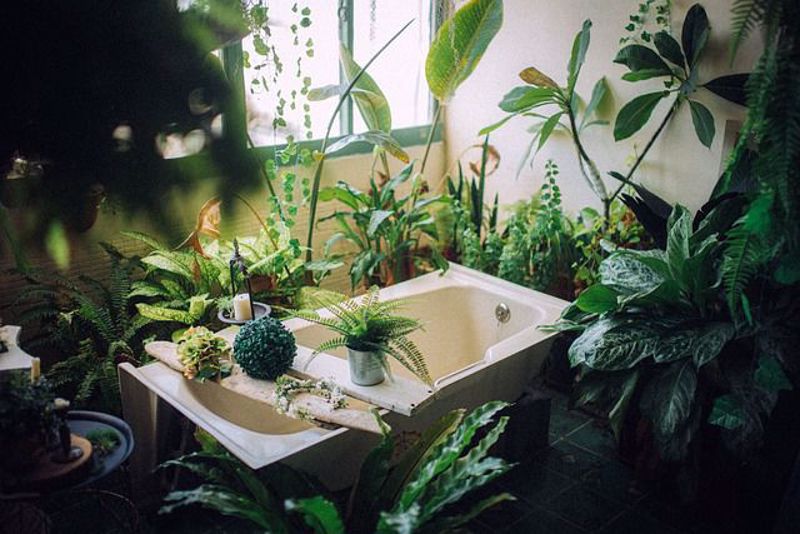Indoor gardening is a wonderful way to bring the beauty and benefits of nature into your home, and with a Lowes Money Off Coupon from We Are Coupons it is a hobby that costs less. Whether you have limited outdoor space, live in a climate with harsh winters, or simply want to enhance your indoor environment, creating a lush oasis inside can transform your living space. This article explores the art of indoor gardening, providing tips and inspiration for cultivating a thriving indoor garden. From selecting the right plants and containers to creating optimal growing conditions and implementing proper care routines, you can create a green haven that not only adds beauty but also improves air quality and promotes well-being.
Choosing the Right Plants
When it comes to indoor gardening, selecting the right plants is crucial. Consider the lighting conditions in your home and choose plants that thrive in those specific conditions. Low-light plants like pothos and snake plants are ideal for areas with limited sunlight, while succulents and cacti are well-suited for bright, sunny spots. Research the watering and humidity requirements of different plant species to ensure they align with your lifestyle and the microclimate of your home.
Selecting Suitable Containers
The choice of containers can greatly impact the aesthetic appeal and functionality of your indoor garden. Opt for containers that are proportionate to the size of your plants and have proper drainage to prevent waterlogging. Consider using a variety of materials such as terracotta pots, ceramic planters, or hanging baskets to add visual interest. Additionally, incorporating self-watering containers or utilizing a tray or saucer beneath the pots can help maintain appropriate moisture levels and minimize water waste.
Creating Optimal Growing Conditions
Indoor plants thrive when provided with suitable growing conditions. Assess the lighting levels in your home and place plants accordingly. South-facing windows typically receive the most sunlight, while east and west-facing windows provide moderate light. Supplemental grow lights can be utilized for areas with insufficient natural light. Maintain a consistent temperature range and avoid placing plants in drafty areas or near heating vents. Indoor plants generally prefer humidity levels between 40-60%, so consider using a humidifier or grouping plants together to create a microclimate.
Implementing Proper Watering Techniques
Watering is a critical aspect of indoor gardening. It's important to strike a balance between underwatering and overwatering to ensure plant health. Observe each plant's specific watering needs and adjust accordingly. Develop a watering schedule that considers factors such as plant species, container size, and environmental conditions. Check soil moisture levels before watering and avoid waterlogging, as this can lead to root rot. Additionally, use room-temperature water and consider using filtered water to minimize mineral buildup.
Providing Nutrients and Fertilization
Indoor plants rely on appropriate nutrients for healthy growth. Choose a suitable potting mix or create your own by combining components like peat moss, perlite, and compost. Fertilize your plants regularly, but be cautious not to over-fertilize as it can harm the plants. Select a balanced fertilizer or opt for organic alternatives to nourish your plants. Follow the recommended dosage and frequency instructions on the fertilizer packaging, considering the specific needs of each plant species.
Pruning and Maintenance
Regular pruning and maintenance are essential to keep your indoor garden thriving. Prune dead or yellowing leaves to promote healthy growth and aesthetics. Trim leggy stems to encourage bushier growth and pinch off spent blooms to redirect energy to new growth. Regularly check for pests and take appropriate measures to control infestations. Dust the leaves of your plants to allow for proper photosynthesis and enhance their appearance.
Styling and Decorating with Plants
Indoor plants not only improve air quality and well-being but also serve as decorative elements in your home. Explore different ways to style and incorporate plants into your interior design. Create eye-catching displays by grouping plants of varying heights and textures. Experiment with hanging plants, wall-mounted planters, or terrariums to maximize vertical space. Use decorative pots and plant stands that complement your home decor. Integrate trailing plants or climbers to add a sense of lushness and create visual interest.
Conclusion
Indoor gardening is a rewarding pursuit that allows you to surround yourself with the beauty of nature within the confines of your home. By selecting the right plants, choosing suitable containers, creating optimal growing conditions, implementing proper watering and fertilization techniques, and practicing regular maintenance, you can cultivate a vibrant and lush indoor garden. Embrace the art of indoor gardening, and watch as your living space transforms into a serene oasis, providing a soothing and refreshing atmosphere for you and your loved ones to enjoy.




